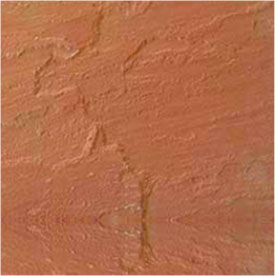Quartzite – An Emerging Star in the Stone Market
October 20, 2021 AdminOften confused with quartz, Quartzite is a metamorphic rock that is shaped when sandstone is suppressed below the earth’s surface. The intense amounts of heat and pressure over millions of years make sandstone particles fuse to create a dense, durable rock. Quartzite lists as an 8 on the Mohs Scale of Hardness (1 is softest and 10 the hardest), which means it is the hardest of any other countertop element, even stiffer as compared to quartz. For some reference, a fingernail records at a 2.5 while a diamond rests at a level of 10.

In terms of looks, quartzite is known to primarily have two tones – dark and light. The color of quartzite mainly depends on the quarrying location and the presence of minerals during the formation. The veining often takes on red, pink, blue, or even green colors that are dragged in from the close materials during metamorphous. The emergence of color is due to the presence of iron oxides (Fe2O3). Other impurities present in the quartzite also play their role in determining the color.
One of the eldest and extremely crystalized quartzite is Cristallo, also called Iceberg, discovered in Brazil. Cristallo can differ from a milky white color with subtle veins, to nearly absolute white, to pink or even green black or mix of all. Irrespective of the color, all Cristallo slabs feature translucent parts, and can be even backlit.
What makes Quartzite special?
Since it is a natural stone, quartzite emerges as a fabulous surface and countertop material. It is the second most popular countertop material after granite according to the leading granite suppliers in India. Despite this, there is a lot of confusion prevailing around this stone. For example, some people think it is a mix of marble and granite but it is not like that. Quartzite is known to have its unique properties that are quite different from the ones of marble and granite.

- Very few people know that real quartzite can be harder than granite.
- Quartzite is not quartz
- It is commonly found in neutral colors
- Not all stones termed “quartzite” are real
- It may resemble marble, but requires lesser maintenance
- Quartzite will not etch from acids like lemon juice or vinegar.
- Quartzite has different porosity levels.
How to determine if it is real quartzite?
Though there could be numerous ways to check the quality of the quartzite slab, the most preferred way is get a lab test done. However, there are primarily two tests to check the authenticity of quartzite.
Scratch Test
Since it is not possible to scratch the quartzite with a knife or glass, conversely, it should easily scratch the glass. This glass scratch test is widely used test done to determine the genuineness of the quartzite stone. Also, this test is so simple that anyone can do it.
- How to do it
- Get a piece of glass
- Choose a pointed edge of quartzite stone that needs to be checked
- Put the glass tile on a table
- Do a light press of the pointed edge against the glass tile surface and try to draw a straight line.
- Look for any scratch mark on the glass surface
- Check whether there is a scratch mark on the glass surface or just erasable mark created by the stone
- If the stone has diverse shades, try carrying out the test on various areas of the glass surface
Acid Sensitivity Test
Since it is not possible to scratch the quartzite with a knife or glass, conversely, it should easily scratch the glass. This glass scratch test is widely used test done to determine the genuineness of the quartzite stone. Also, this test is so simple that anyone can do it.
Etching can defined as a blunted area appearing on the shiny surface of the stone, it can be either light or dark. Marble stone will depict clear etching, whereas dolomitic marble will exhibit light etching, however, granite won’t show any kind of etching mark on the surface
The above given two tests are enough to tell if the quartzite slab is genuine or not.
Popular Quartzite Stones from India
D Green Quartzite

This quartzite stone is primarily known for its dark green background. There could be different patterns of yellow, beige, and grey-color appear on the surface that further define the natural look of the stone. Ideal for residential and commercial construction projects, this Indian quartzite stone is mainly used for roofing, flooring, and wall cladding.
Ocean Green Quartzite

Sourced from North India, Ocean Green Quartzite highlights some traces of grey and buff colors. It is mainly used for pool surroundings, stair treads, cladding, flooring, and roofing. In general, it remains the most preferred choice for places with heavy footfalls. This quartzite stone comes in a wide range of finishes like polished, brushed, and others.
H White Quartzite

Boasting a greyish-white color tone, this natural stone is mainly used for flooring and roofing. The distinctive surface texture and finish make this stone the most sought-after choice among architects, builders, and construction contractors. This stone product is in huge demand from different corners of the world due to its characteristic features.
Conclusion
Due to its upscale color tone and surface characteristics, this stone is primarily chosen as a premium surfacing material. It also emerges as a wonderful alternative to granite, marble, and other surfacing materials. Moreover, its high level of hardness is another reason why it is an excellent choice in the construction industry.








